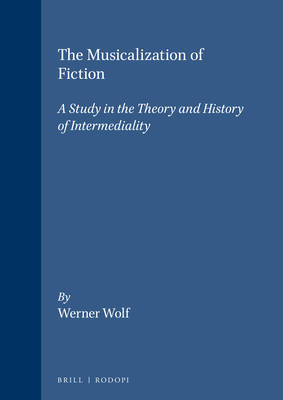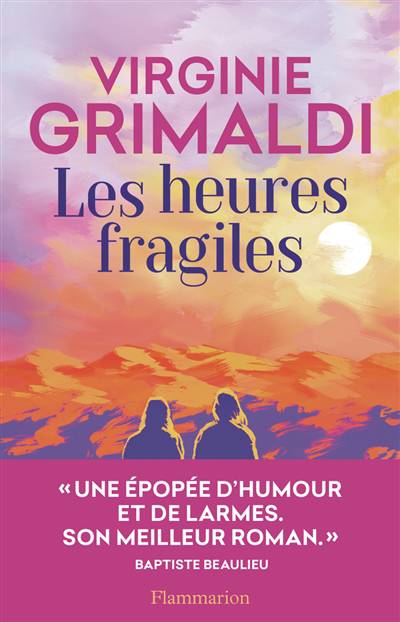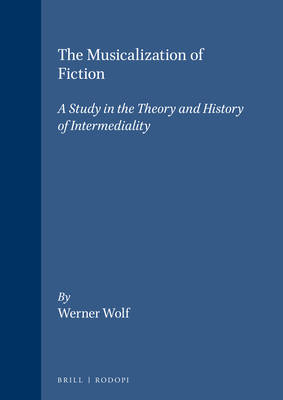
- Retrait gratuit dans votre magasin Club
- 7.000.000 titres dans notre catalogue
- Payer en toute sécurité
- Toujours un magasin près de chez vous
- Retrait gratuit dans votre magasin Club
- 7.000.0000 titres dans notre catalogue
- Payer en toute sécurité
- Toujours un magasin près de chez vous
88,98 €
+ 177 points
Description
This volume is a pioneering study in the theory and history of the imitation of music in fiction and constitutes an important contribution to current intermediality research.
Starting with a comparison of basic similarities and differences between literature and music, the study goes on to provide outlines of a general theory of intermediality and its fundamental forms, in which a more specialized theory of the musicalization of (narrative) literature based on contemporary narratology and a typology of the forms of musico-literary intermediality are embedded. It also addresses the question of how to recognize a musicalized fiction when reading one and why Sterne's Tristram Shandy, contrary to what has been previously said, is not to be regarded as a musicalized fiction.
In its historical part, the study explores forms and functions of experiments with the musicalization of fiction in English literature. After a survey of the major preconditions for musicalization - the increasing appreciation of music in 18th and 19th-century aesthetics and its main causes - exemplary fictional texts from romanticism to postmodernism are analyzed. Authors interpreted are De Quincey, Joyce, Woolf, A. Huxley, Beckett, Burgess and Josipovici. Whilst the limitations of a transposition of music into fiction remain apparent, experiments in this field yield valuable insights into mainly a-mimetic and formalist aesthetic tendencies in the development of more recent fiction as a whole and also show to what extent traditional conceptions of music continue to influence the use of this medium in literature.
The volume is of relevance for students and scholars of English, comparative and general literature as well as for readers who take an interest in intermediality or interart research.
Starting with a comparison of basic similarities and differences between literature and music, the study goes on to provide outlines of a general theory of intermediality and its fundamental forms, in which a more specialized theory of the musicalization of (narrative) literature based on contemporary narratology and a typology of the forms of musico-literary intermediality are embedded. It also addresses the question of how to recognize a musicalized fiction when reading one and why Sterne's Tristram Shandy, contrary to what has been previously said, is not to be regarded as a musicalized fiction.
In its historical part, the study explores forms and functions of experiments with the musicalization of fiction in English literature. After a survey of the major preconditions for musicalization - the increasing appreciation of music in 18th and 19th-century aesthetics and its main causes - exemplary fictional texts from romanticism to postmodernism are analyzed. Authors interpreted are De Quincey, Joyce, Woolf, A. Huxley, Beckett, Burgess and Josipovici. Whilst the limitations of a transposition of music into fiction remain apparent, experiments in this field yield valuable insights into mainly a-mimetic and formalist aesthetic tendencies in the development of more recent fiction as a whole and also show to what extent traditional conceptions of music continue to influence the use of this medium in literature.
The volume is of relevance for students and scholars of English, comparative and general literature as well as for readers who take an interest in intermediality or interart research.
Spécifications
Parties prenantes
- Auteur(s) :
- Editeur:
Contenu
- Nombre de pages :
- 284
- Langue:
- Anglais
- Collection :
- Tome:
- n° 35
Caractéristiques
- EAN:
- 9789042004573
- Date de parution :
- 01-01-99
- Format:
- Livre broché
- Format numérique:
- Trade paperback (VS)
- Dimensions :
- 170 mm x 240 mm
- Poids :
- 485 g

Les avis
Nous publions uniquement les avis qui respectent les conditions requises. Consultez nos conditions pour les avis.






